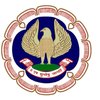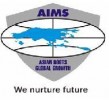Filter interviews by
ICMR-National Institute of Malaria Research Project Assistant Interview Questions and Answers
ICMR-National Institute of Malaria Research Project Assistant Interview Experiences
1 interview found
I applied via Walk-in and was interviewed before May 2020. There was 1 interview round.
Interview Questionnaire
4 Questions
- Q1. Introduce yourself.
- Q2. Steps for DNA isolation
- Ans.
DNA isolation involves cell lysis, removal of proteins and RNA, and precipitation of DNA.
Collect cells or tissue sample
Lyse cells to release DNA
Remove proteins and RNA using enzymes or chemicals
Precipitate DNA using alcohol
Wash and dry DNA pellet
Re-suspend DNA in buffer or water
Quantify DNA using spectrophotometer
- Q3. Steps for PCR
- Ans.
PCR is a technique used to amplify DNA sequences. It involves three main steps: denaturation, annealing, and extension.
Denaturation: Heat the DNA to separate the double-stranded DNA into single strands.
Annealing: Cool the DNA to allow the primers to bind to the complementary sequences on the single-stranded DNA.
Extension: Raise the temperature to allow the Taq polymerase to extend the primers and synthesize new DNA str...
- Q4. What percentage of isopropanol is used in DNA isolation
Interview Preparation Tips
Top trending discussions






Interview questions from similar companies

(1 Question)
- Q1. Why are joining are company ?

Interview Questionnaire
1 Question
- Q1. What is PT100 in temperature sensor
- Ans.
PT100 is a type of temperature sensor that uses a platinum resistance element.
PT100 is a type of RTD (Resistance Temperature Detector) sensor.
It measures temperature by detecting changes in the resistance of a platinum wire.
PT100 sensors have a resistance of 100 ohms at 0 degrees Celsius.
They are commonly used in industrial and scientific applications.
PT100 sensors are highly accurate and stable over a wide temperature
Interview Preparation Tips

Project Associate Interview Questions & Answers
The Institute Of Chartered Accountantsposted on 28 Sep 2021
I applied via Campus Placement and was interviewed in Aug 2021. There was 1 interview round.
Interview Questionnaire
1 Question
- Q1. Articlesship experience
Interview Preparation Tips

Project Manager Interview Questions & Answers
The Institute Of Chartered Accountantsposted on 22 Apr 2022
I applied via Recruitment Consulltant and was interviewed before Apr 2021. There were 2 interview rounds.

(9 Questions)
- Q1. What is the tender process?
- Ans.
The tender process is a formal process of inviting bids from potential suppliers to provide goods or services.
The process starts with the organization issuing a request for tender (RFT) or request for proposal (RFP).
Potential suppliers then submit their bids, which are evaluated based on criteria such as price, quality, and delivery time.
The organization may then shortlist the bidders and invite them to make a presenta...
- Q2. What should be given to vendor to execute the work?
- Ans.
The vendor should be given a clear scope of work, timeline, budget, and any necessary resources.
Scope of work document
Timeline with milestones
Budget allocation
Necessary resources such as equipment or software
Communication plan
- Q3. What is the mobilization advance?
- Ans.
Mobilization advance is an upfront payment made to a contractor to cover initial expenses.
It is a payment made to a contractor before the start of a project
It is meant to cover initial expenses such as equipment, materials, and labor
The amount of mobilization advance is usually a percentage of the total contract value
It is typically paid back to the client through deductions from future payments
Example: A construction ...
- Q4. What is the process to recover Mobilization advance?
- Ans.
The process to recover Mobilization advance
Review the contract to determine the terms of the mobilization advance
Ensure that the mobilization work has been completed as per the contract
Submit a request for the recovery of the mobilization advance
Provide supporting documentation to justify the request
Negotiate with the client if there are any disputes or issues
Receive the recovered mobilization advance
- Q5. What is the process to consider the extra items?
- Ans.
The process to consider extra items involves identifying the need, evaluating the impact, obtaining approval, and incorporating into the project plan.
Identify the need for the extra item
Evaluate the impact on the project timeline, budget, and resources
Obtain approval from stakeholders or change control board
Incorporate the extra item into the project plan and adjust accordingly
- Q6. What is the process to consider the extension time of contract period?
- Ans.
The process to consider extension time of contract period involves several steps.
Review the terms and conditions of the contract
Identify the reason for the extension request
Assess the impact of the extension on project timeline and budget
Negotiate new terms and conditions if necessary
Obtain approval from all relevant stakeholders
Amend the contract to reflect the extension
Communicate the extension to all parties involve
- Q7. What is the full form of PMC?
- Ans.
PMC stands for Project Management Consultancy.
PMC refers to the services provided by a third-party consultant to manage a project on behalf of the client.
PMC involves planning, organizing, and overseeing the project from start to finish.
PMC ensures that the project is completed on time, within budget, and meets the client's requirements.
PMC is commonly used in construction, infrastructure, and engineering projects.
Exam...
- Q8. What is the mean by Arbitration?
- Ans.
Arbitration is a legal process of resolving disputes between parties outside of court.
Arbitration involves a neutral third party who listens to both sides and makes a decision.
It is often used in business and commercial disputes.
Arbitration can be binding or non-binding, depending on the agreement of the parties involved.
It is typically faster and less expensive than going to court.
Examples of organizations that offer ...
- Q9. Who can appoint the arbitrator?
- Ans.
The parties involved in a dispute can appoint an arbitrator.
Arbitrator can be appointed by mutual agreement of the parties involved in a dispute.
In some cases, the appointment of an arbitrator may be specified in a contract or agreement.
If the parties cannot agree on an arbitrator, a court may appoint one.
The arbitrator must be impartial and independent.
The arbitrator's decision is binding and enforceable.
Interview Preparation Tips
ICMR-National Institute of Malaria Research Interview FAQs
Tell us how to improve this page.
Interview Questions for Popular Designations
- Project Manager Interview Questions
- Project Engineer Interview Questions
- Assistant Project Manager Interview Questions
- Project Coordinator Interview Questions
- Project Lead Interview Questions
- Project Associate Interview Questions
- Senior Project Manager Interview Questions
- Senior Project Engineer Interview Questions
- Show more
People are getting interviews through
Interview Questions from Similar Companies
ICMR-National Institute of Malaria Research Project Assistant Reviews and Ratings
based on 1 review
Rating in categories
|
Lab Technician
7
salaries
| ₹2.2 L/yr - ₹3.3 L/yr |
|
Junior Research Fellow
5
salaries
| ₹3.8 L/yr - ₹4.7 L/yr |
|
Scientist B
5
salaries
| ₹6.5 L/yr - ₹8.4 L/yr |
|
Senior Research Fellow
5
salaries
| ₹5 L/yr - ₹5.5 L/yr |
|
Research Associate
4
salaries
| ₹5.6 L/yr - ₹6.2 L/yr |

Jetking Infotrain

Asia-Pacific Institute of Management

Billabong High International School

National Institute of Technology
Calculate your in-hand salary
- Home >
- Interviews >
- ICMR-National Institute of Malaria Research Interview Questions >
- ICMR-National Institute of Malaria Research Project Assistant Interview Questions







